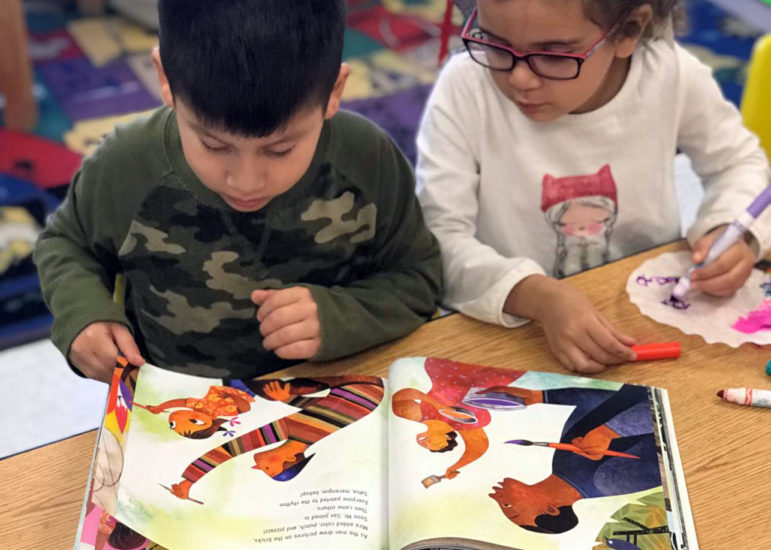
The Learning Alliance
Pre-K students interact with a text and create art based on the story.
Is your out-of-school time program in a good position to offer reading support to young kids?
How can you ensure that your efforts make a difference?
A tool created by Research for Action may help. Providers use the tool to answer a series of questions showing whether they are on track in their efforts.
The OST Early Literacy Quality Tool has a checklist for what to think about before starting a literacy support program, said Rachel Comly,, senior research analyst at Research for Action and creator of the tool. It then allows providers to assess program quality areas.
At the outset, do programs should have a supportive emotional climate with positive relationships between staff and students? Do they welcome parents and encourage family involvement? Are they connected with a school and in a position to support its efforts?
“That’s a starting point for OST programs,” Comly said.
If they use volunteers to provide reading instruction, they should have a system in place for recruiting and training them, as well as supporting and retaining them.
[Related: What After-school Field Needs to Know About Best Ways of Teaching Kids to Read]
[Related: Moonshot Moment: Entire community addresses problem of kids’ reading skill]
The Literacy Quality Tool then helps providers determine whether they are on track in the areas of:
- expertise
- staffing and training
- content
- curriculum and structure.
For example, if a program uses volunteers or paraprofessionals, are they supervised by a coach or literacy specialist? If not, are they trained to use an evidence-based curriculum? Simply providing lesson plans to volunteers or paraprofessionals is not considered adequate.
Does the program have a reading specialist or someone with an early literacy teaching certification on staff? If not, can the program access such a person from another agency?
Programs should focus on an area of reading instruction shown to be effective.
“We know from the National Reading Panel report in 2000 that reading achievement comes through five different elements of literacy [instruction],” Comly said.
They should target specific areas — such as phonics or vocabulary — based on whether the school or student assessments have indicated a need.
Unless the program is using lesson plans created by literacy experts or using an evidence-based program, it needs to have trained staff such as certified teachers with adequate planning time.
Programs that use computer-based lessons should use a proven program for phonics such as Fast Forward, DaisyQuest or Earobics.
Does the program consistently use data to target instruction and monitor progress? Does it consistently monitor program quality by using data?
The tool also helps providers determine the amount of instruction time needed for various types of programs, ranging from one-on-one tutoring to after-school enrichment to summer learning.
It also has a checklist of best practices for those serving English language learners, although the research in this area is limited.































